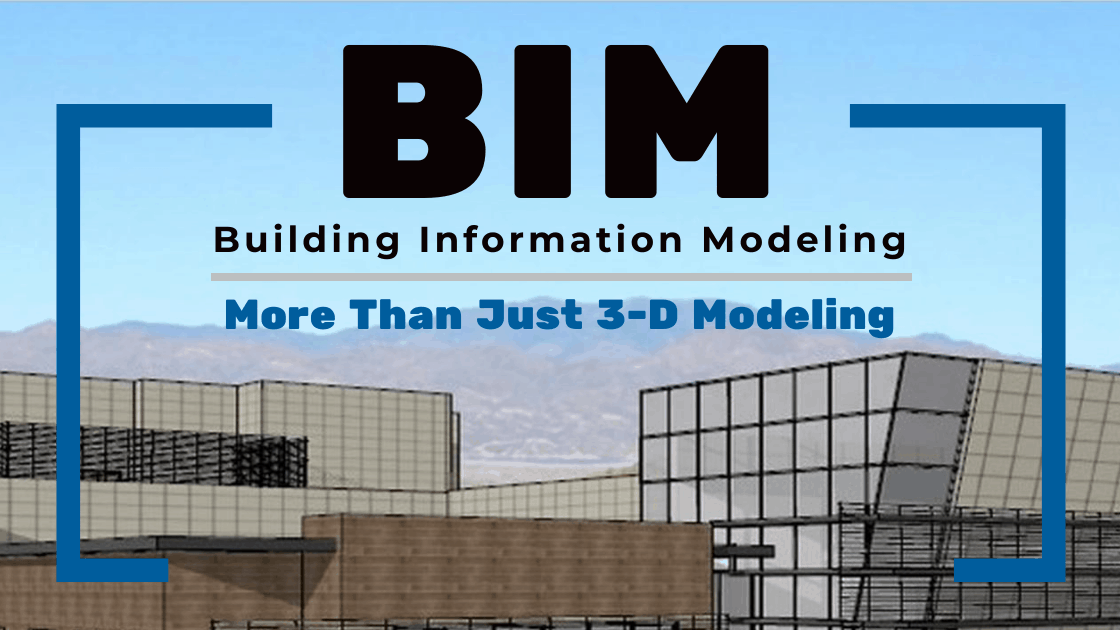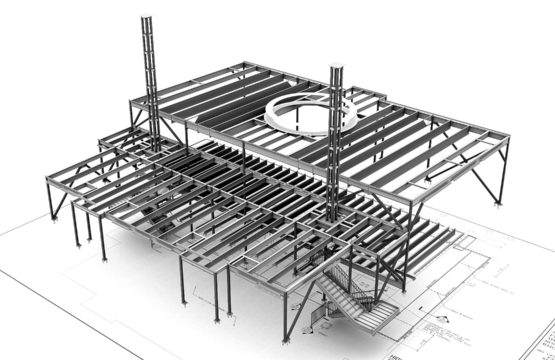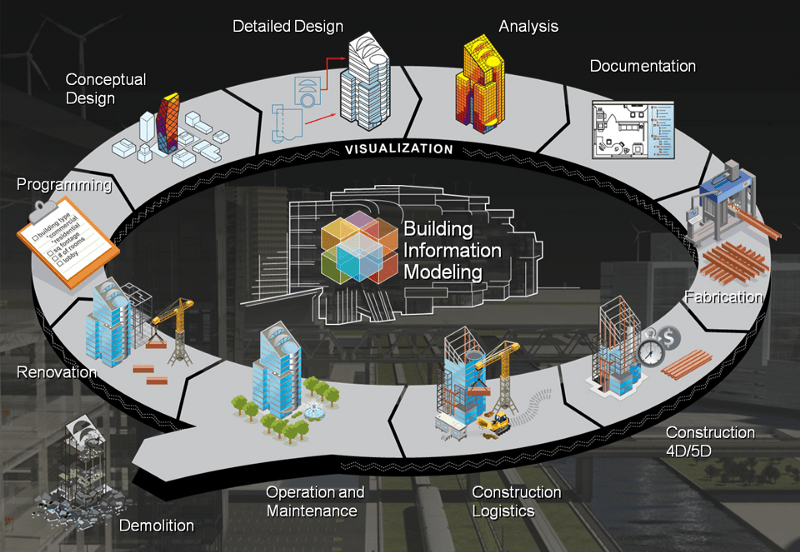
“BIM is an intelligent model-based process that helps make design, engineering, project and operational information accurate, accessible and actionable for buildings and infrastructure”
-Bond, PR Manager, Autodesk
“BIM is the use of 3D virtual models of buildings, as well as a process of managing and collecting building data”
-Mary Moscarello, GRAPHISOFT


BIM Benefits
- Sharing, collaboration, and versioning that paper drawings don’t accomplish
- Model-based estimates
- Pre-construction project visualization
- Improved coordination & scheduling
- Better clash detection, avoiding last-minute changes
- Cost Reduction: less waste and miscommunication
- Increased productivity (especially when used for prefabrication or modular construction)
- Better risk analysis ensures higher safety
- Higher building quality
- More efficient building handover
BIM During Each Stage of the Construction Project Life Cycle
Planning
BIM generates models to help mitigate project risks upfront and integrates and digitizes the most efficient path from design to construction.
Building
BIM specifications are used to start construction. Logistics are shared with all contractors to ensure optimum timing and efficiency.
“BIM…improves collaboration and ensures a new level of control over projects of all sizes. Better project outcomes are achieved through a complete flow of information among applications and across distributed project teams for greater accuracy across the entire supply chain.”
-Harry Vitelli, Bentley Systems

Image via Autodesk
Who Is BIM For?
According to Engineering.com, it can be used for:
- Architecture & building design
- Civil & structural engineering
- Energy & utilities
- Highway & road engineering
- Landscape & land surveying
- Offshore & marine architecture
- Rail & metro transportation engineering
- Tunneling & subway architecture
- Urban master-planning & smart city design

https://www.letsbuild.com/blog/what-is-bim-what-are-its-benefits-to-the-construction-industry
https://www.engineering.com/BIM/ArticleID/11436/BIM-101-What-is-Building-Information-Modeling.aspx
https://constructible.trimble.com/construction-industry/what-is-bim-building-information-modeling
https://www.autodesk.com/solutions/bim
https://www.autodesk.com/solutions/architecture-engineering-construction/construction
https://connect.bim360.autodesk.com/benefits-of-bim-in-construction




